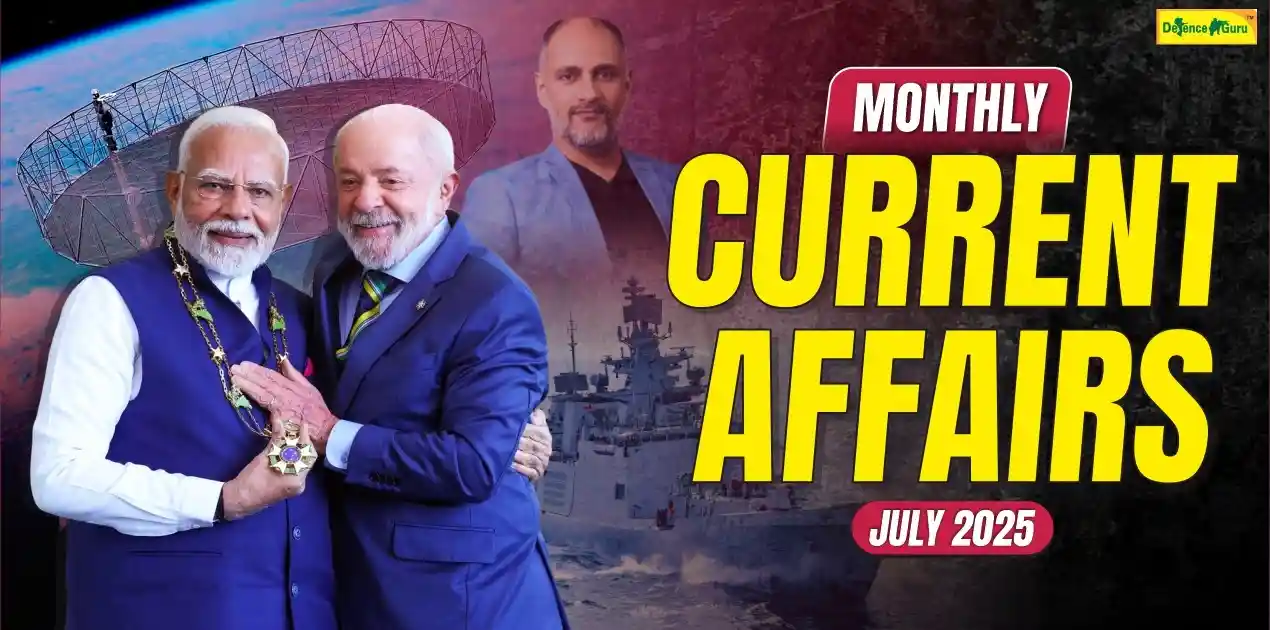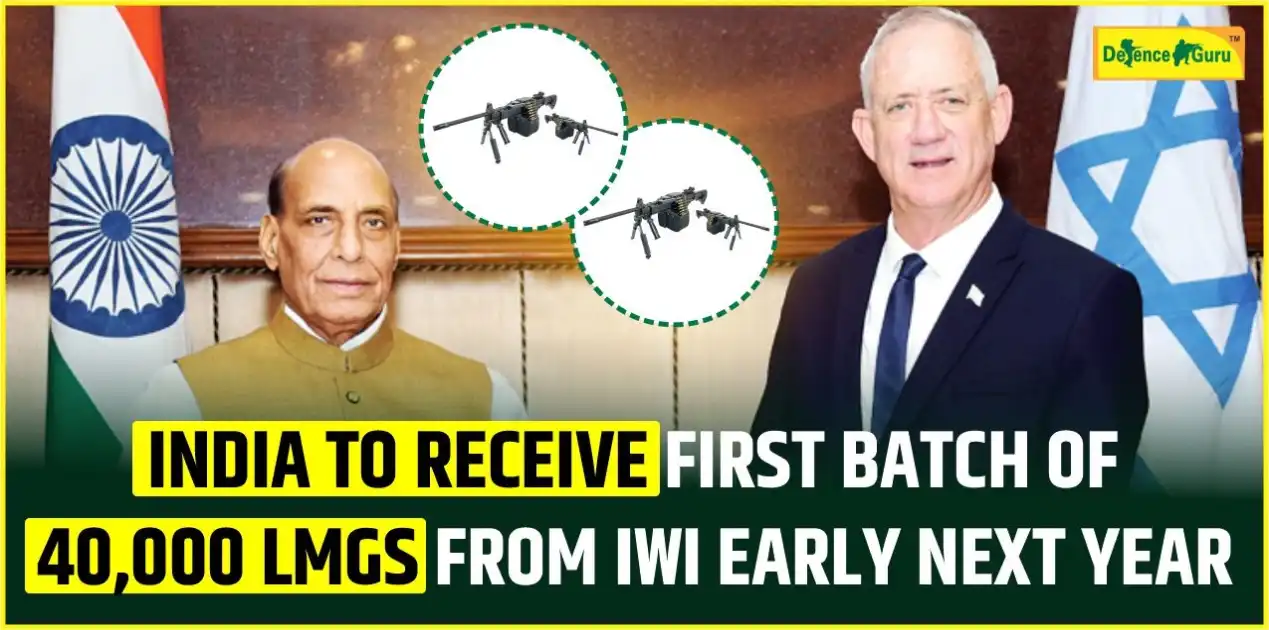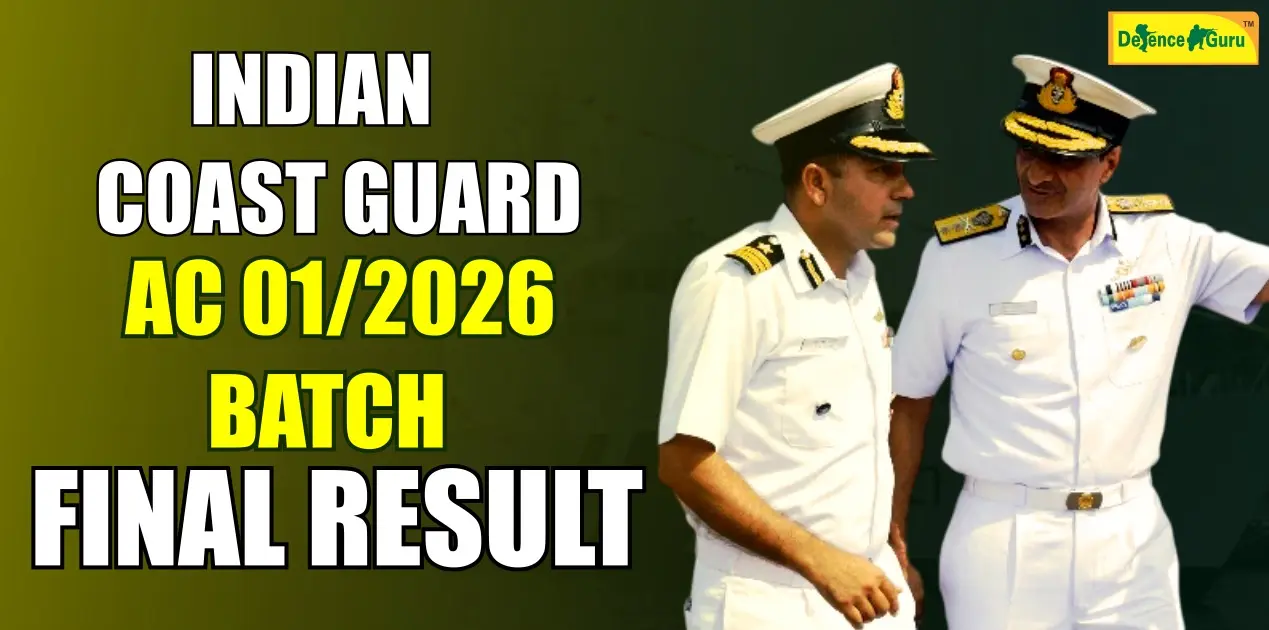May 2025 Current Affairs for NDA, CDS, UPSC & Other Competitive Exams
In today’s fast-changing world, staying updated with current affairs is very important if you want to clear defence exams like NDA, CDS, AFCAT, NAVY, AIRFORCE, MNS, and others. Regular reading of monthly current affairs helps you stay informed and builds your confidence. These updates are useful not only for the written exams but also for interviews. For defence exams, knowing the latest happenings is not just helpful—it’s necessary. Defence and military matters change quickly, so you must have a clear understanding of what’s going on in the world, especially in areas like international relations and security. Studying monthly current affairs also improves your thinking skills. It trains your brain to analyse situations, make smart decisions, and manage time pressure—all of which are important for a career in the armed forces.
That’s why Defence Guru brings you the monthly current affairs update for May 2025. Go through the full article and make sure you don’t miss the important defence-related news and updates.
Igla-S Missiles
India has strengthened its air defence with the acquisition of Russian-origin Igla-S man-portable missiles under a ₹260 crore emergency procurement. These shoulder-fired VSHORADS systems target low-flying aircraft, drones, and helicopters using infrared homing, with a range of up to 6 km and altitude of 3.5 km.
This move follows increased threats along the western border and recent terror attacks. The missiles enhance frontline readiness, especially against drone incursions from across the border.
To counter drone threats, the Army has deployed the Integrated Drone Detection and Interdiction System (IDD&IS), capable of neutralising drones 8 km away using jammers and lasers.
Future plans include DRDO-developed directed energy weapons and advanced radars to detect low-flying threats, reflecting India’s push for defence modernisation and self-reliance.1
IMO’s Net-Zero Framework
The International Maritime Organization (IMO) plans to implement its Net-Zero Framework by 2027 (pending 2025 adoption) to cut greenhouse gas emissions from shipping. It features a two-tier compliance system with differential pricing for credits and mandates a 21% GHG intensity (GFI) reduction by 2030, rising to 43% by 2035.
The framework complements existing rules like the EU ETS and Fuel EU Maritime, with potential future alignment to avoid regulatory overlap. It supports various alternative fuels and transitional technologies like LNG, which remain commercially important.
Proposed updates to Life-Cycle Assessment (LCA) Guidelines aim to better account for emissions from biofuels, LNG, and ammonia. The IMO may also introduce measures to curb black carbon emissions.
While the framework poses regulatory and contractual challenges, it also opens doors for innovation in cleaner maritime fuels and technologies.
Kaleshwaram Lift Irrigation Project
Kaleshwaram Project Under Scrutiny After Structural Failures
The Kaleshwaram Lift Irrigation Project (KLIP) in Telangana, once a flagship water management initiative, faces serious setbacks following a National Dam Safety Authority (NDSA) report revealing structural damage, especially at the Medigadda barrage.
Key Issues:
- NDSA found sinking piers, cracks, and design flaws due to inadequate geotechnical studies and poor construction practices.
- The project was executed without full regulatory clearance or proper safety oversight.
- Costs have ballooned from ₹82,000 crore to ₹1.47 lakh crore, straining Telangana’s finances with ₹16,000 crore annual repayments.
Political Fallout:
- The current government calls KLIP a failed, mismanaged project.
- The previous ruling party (BRS) dismisses the findings as politically driven.
Broader Impact:
The KLIP crisis highlights the dangers of neglecting scientific oversight in mega infrastructure projects and renews calls for greater transparency and accountability in public spending.
Multi Influence Ground Mine (MIGM)
India Successfully Tests Advanced Multi-Influence Ground Mine (MIGM)
India has achieved a significant defence milestone with the successful test-firing of the indigenously developed Multi Influence Ground Mine (MIGM), enhancing its naval warfare capabilities.
Key Highlights:
- Developed by DRDO’s Naval Science and Technological Laboratory, with Bharat Dynamics Ltd. and Apollo Microsystems as partners.
- Technology: Features advanced sensors to detect acoustic, magnetic, and pressure signatures; operates in cable-controlled and autonomous modes.
- Strategic Use: Effective against stealth ships and submarines; deployable from ships, submarines, and coastal platforms.
- Context: The test follows heightened regional tensions and recent terror incidents, emphasizing India's focus on strengthening maritime security.
The MIGM represents a leap in India’s undersea defence preparedness amid evolving regional threats.
Palamu Tiger Reserve
Jaigir Village Relocated for Conservation at Palamu Tiger Reserve
In a major conservation milestone, Jaigir village has been successfully relocated from the core area of Jharkhand’s Palamu Tiger Reserve (PTR) to Polpol village, aiming to reduce human-wildlife conflict and restore critical habitats.
Key Highlights:
- PTR Overview: One of India’s first nine tiger reserves, spanning 1,014 sq km with rich biodiversity including tigers, elephants, leopards, and sloth bears.
- Relocation Details: Jaigir is the first village to be fully relocated outside PTR's core; families received ₹15 lakh and land per household.
- Impact: Nearly 1,000 sq km freed for wildlife movement and ecological restoration.
- Model Village: Polpol is being developed with better infrastructure and living conditions, setting a precedent for future relocations.
- Next Steps: Eight more villages have been identified for relocation to strengthen conservation and improve livelihoods.
This initiative marks a key step toward balancing ecological preservation with community development.
FATF Grey List
India Pushes for Pakistan’s FATF Grey Listing After Pahalgam Attack
Following the Pahalgam terror attack that killed 26 people, India is seeking Pakistan’s re-entry onto the Financial Action Task Force (FATF) grey list to curb its financial channels potentially linked to terrorism.
FATF Overview
- Established in 1989 by the G-7 to combat money laundering, later expanded to cover terrorist financing and WMD proliferation.
- India became a full member in 2010.
Grey List Impact
- Countries on the grey list face increased scrutiny, reduced foreign investment, and difficulties securing international loans.
- Pakistan was removed from the grey list in October 2022 after AML/CFT reforms.
India’s Strategy
- India plans to rally FATF member nations to support re-listing Pakistan.
- This reflects a broader geopolitical strategy using financial pressure as a counter-terrorism tool.
Geopolitical Implications
The push underscores how financial oversight has become a key element in international security and diplomacy. The upcoming FATF plenary will be critical in shaping the region’s future stability.
Cheetah Corridor Project
India to Establish 17,000 sq km Cheetah Corridor
India is developing a Cheetah Corridor spanning 17,000 sq km across 27 districts in Rajasthan, Uttar Pradesh, and Madhya Pradesh. It aims to support the free movement and habitat expansion of cheetahs.
Key Features
- Connects 13 districts in Rajasthan, 2 in UP, and 12 in MP.
- Links protected areas like Shahabad, Mukundra, Gandhi Sagar, and Ranthambhore.
- Designed to reduce habitat fragmentation and enhance genetic diversity.
Linked to Project Cheetah
Part of Project Cheetah, launched to reintroduce cheetahs in India after their extinction in 1952. African cheetahs are being relocated to Indian reserves to restore ecological balance and promote biodiversity.
Expert Support
Endorsed by the NTCA and Wildlife Institute of India, with the Kuno-Gandhi Sagar landscape deemed optimal for cheetah survival and movement.
INCOIS Launches Submarine Cable
The Indian National Centre for Ocean Information Services (INCOIS) has launched a submarine cable project near Wandoor, Andaman and Nicobar Islands, to enhance long-term ocean observations. The 150 km cable will connect two sensor-equipped nodes at depths of 2,000-2,500 meters, enabling real-time data on ocean dynamics, seismic activity, and tsunami risks.
INCOIS is actively involved in three key projects under UNESCO's Ocean Decade Tsunami Programme (ODTP), focusing on tsunami source study, impact assessment, and improved early warning systems.
Key initiatives include:
- People Centred Tsunami Early Warning for India (PCTWIN): Enhances tsunami detection, forecasting, communication, and community preparedness.
- Tsunami Ready Odisha (TRO): Builds coastal community resilience through awareness and preparedness, aligned with UNESCO’s Tsunami Ready Recognition Programme.
INCOIS also provides tsunami hazard maps and evacuation plans, with two Odisha villages currently declared “tsunami ready,” working closely with the Odisha State Disaster Management Agency (OSDMA) to prepare more communities.
Yamuna River Rejuvenation Action Plan 2025
The Yamuna River, crucial for Delhi’s water supply, is plagued by pollution and encroachment. In April 2025, Prime Minister Narendra Modi chaired a meeting that finalized a 30-point action plan to rejuvenate the river and ensure clean water for the city.
Key Objectives:
- Enhance the river's environmental flow (E-flow)
- Manage sewage and stormwater
- Remove floodplain encroachments and restore ecosystems
Agencies Involved:
DDA, NMCG, CPCB, Delhi Government, Delhi Jal Board, and MCD.
Major Measures:
- Discharge 773 MLD of treated water by Sept 2026
- Add 6.23 cumecs of treated water from Okhla STP
- Create 500 MLD new sewage treatment capacity by March 2029
- Connect unauthorised colonies to sewage networks
Floodplain Management:
A Special Task Force will clear encroachments by Sept 2026 and oversee riverfront development.
Public Engagement:
The plan includes awareness campaigns and citizen involvement in conservation efforts.
Political Context:
The BJP has pledged to clean the Yamuna and develop it akin to Ahmedabad’s Sabarmati Riverfront, criticizing previous inaction.
Future Prospects:
A "Yamuna Kosh" will fund long-term river cleanup and wastewater treatment, with success hinging on inter-agency collaboration and governance.
Digital Access as a Fundamental Right in India
In a landmark ruling, the Supreme Court of India recognised digital access as a fundamental right under Article 21 of the Constitution. This judgement emerged from petitions by acid attack survivors and visually impaired individuals who faced challenges in completing digital Know Your Customer (KYC) processes, which prevented them from accessing essential services and welfare benefits.
The court ruled that digital access is integral to the right to life and liberty and emphasised the need for an inclusive digital ecosystem. It mandated that the state must ensure equal access to digital platforms for all citizens, especially marginalised groups, persons with disabilities (PwDs), vulnerable individuals, and historically excluded communities. The judgement underscores the constitutional obligations under Articles 14, 15, and 38 to promote equality and social justice.
Further, the court directed reforms in KYC processes to accommodate the needs of PwDs. It asked the government to adopt alternative identity verification methods, such as video-based KYC, that do not require visual tasks. Twenty specific directives were issued to improve digital accessibility, making this judgement a precedent for inclusive digital policies in the future.
Centre Approves Caste Census
The Indian government has approved caste-based enumeration in the upcoming 2026 Census—a major policy shift driven by demands from OBC-focused parties. States like Bihar, Karnataka, and Telangana have already conducted their own surveys, though Karnataka's data remains unpublished.
Background:
Since 1951, the Census has recorded only SC and ST data. The last full caste census was in 1931. Attempts in 2011 led to the SECC, which excluded caste data due to logistical issues.
Need for Caste Census:
Accurate caste data is vital for equitable reservation policies, welfare targeting, and future initiatives like women’s reservation and delimitation post-2026.
Justice Rohini Commission:
Formed in 2017, it recommended sub-categorizing 2,633 OBC castes into four groups. A 2018 analysis revealed stark disparities—25% of OBCs received 97% of benefits, while 37% had none.
Implementation:
The 2026 Census will occur in two phases: House Listing and Population Enumeration. A confirmed date is awaited. The caste census could significantly impact representation, policy-making, and inclusive development.






















